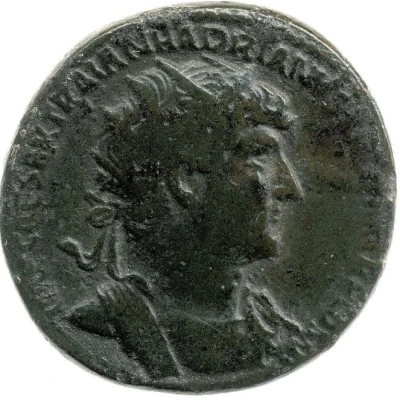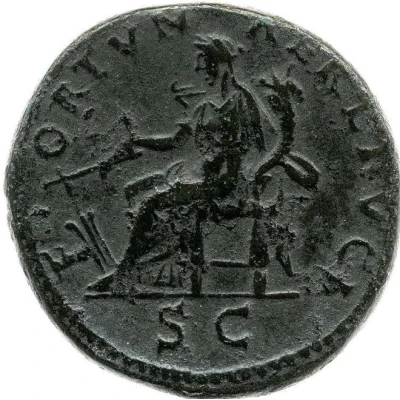


© British Museum
Dupondius - Hadrian FORTVNAE REDVCI S C; Fortuna
| Orichalcum | 12.5 g | 27 mm |
| Issuer | Rome › Roman Empire (27 BC - 395 AD) |
|---|---|
| Emperor | Hadrian (Publius Aelius Hadrianus) (117-138) |
| Type | Standard circulation coin |
| Years | 121-123 |
| Value | 1 Dupondius = ⅛ Denarius |
| Currency | Denarius, Reform of Augustus (27 BC – AD 215) |
| Composition | Orichalcum |
| Weight | 12.5 g |
| Diameter | 27 mm |
| Shape | Round (irregular) |
| Technique | Hammered |
| Demonetized | Yes |
| Updated | 2024-10-06 |
| Numista | N#255168 |
|---|---|
| Rarity index | 100% |
Reverse
Fortuna, seated left, holding rudder and cornucopia.
Script: Latin
Lettering:
FORTVNAE REDVCI
S C
Translation:
Fortunae Reduci. Senatus Consultum.
To returning fortune. Decree of the senate.
Comment
Source: Online Coins of the Roman Empire (OCRE)Interesting fact
The Dupondius coin featuring Fortuna, the Roman goddess of fortune and prosperity, is an interesting piece of history. One fascinating fact about this coin is that it was made of Orichalcum, a metal that was highly valued in ancient times for its durability and resistance to corrosion. Orichalcum was a bronze-like alloy composed of copper, zinc, and sometimes small amounts of other metals like nickel and cobalt. The use of this metal in the production of coins during the Roman Empire speaks to the advanced metallurgical knowledge and techniques of the time.

